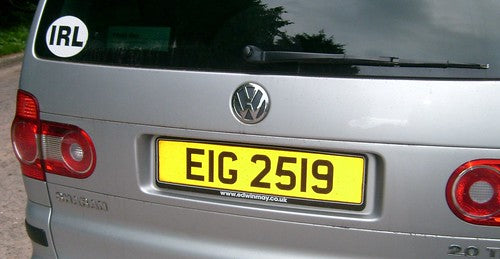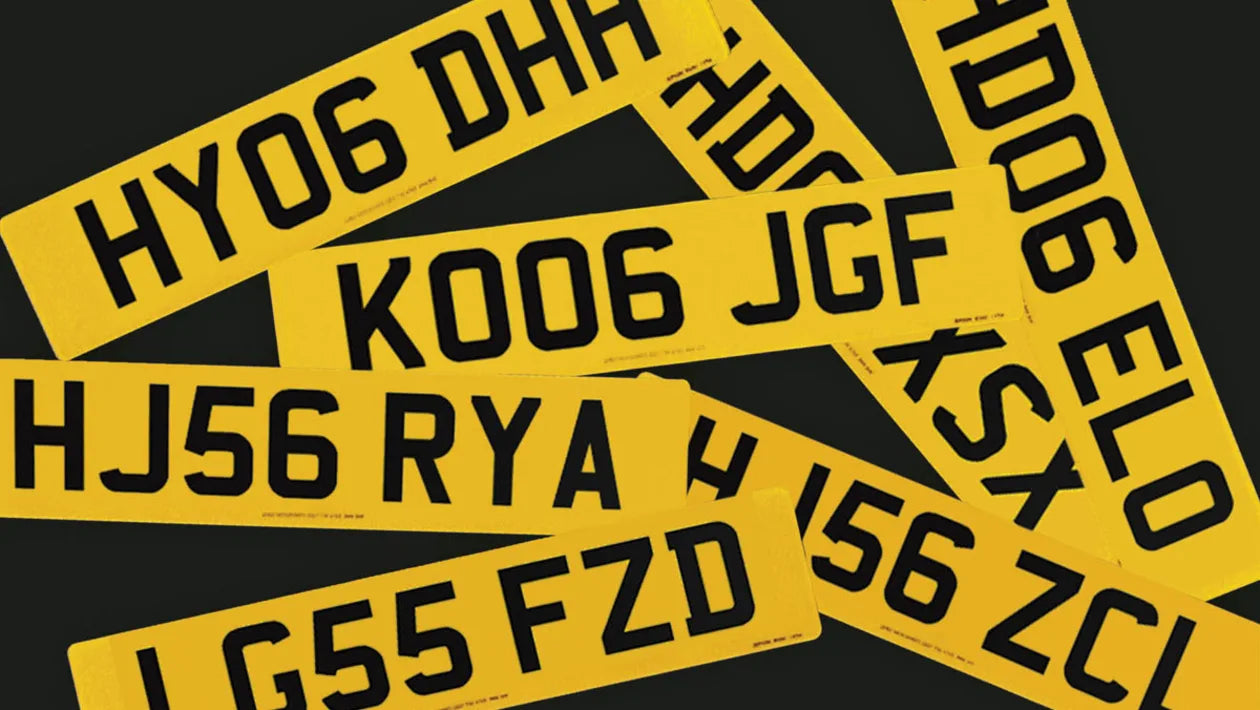
Why Do Some Cars Not Have Front Number Plates?
, by Reece Dennis, 12 min reading time

, by Reece Dennis, 12 min reading time
Have you ever wondered why some cars don't have front number plates? It's a question that many drivers have pondered upon while navigating through traffic. In this article, we delve into the reasons behind this peculiar phenomenon. From legality to customization, there are various factors to consider when it comes to front number plates on vehicles. While most countries require cars to have both front and rear plates for identification purposes, there are exceptions to this rule. Some states or provinces may allow certain vehicles, such as motorcycles or antique cars, to forgo the front plate requirement. Additionally, in jurisdictions where front number plates are mandatory, there are instances where law enforcement may exercise discretion in enforcing this rule. Moreover, car enthusiasts often opt to remove the front number plate for aesthetic reasons or to showcase customized modifications. So, whether you're curious about the legalities or simply interested in about the motivations behind it, this article takes a closer look at why some cars choose to forego the front number plate.

In most countries, front number plates are mandatory for all vehicles. The primary purpose of this requirement is to enable law enforcement agencies to easily identify vehicles involved in criminal activities, traffic violations, or accidents. Moreover, front number plates are essential for traffic management and parking enforcement. They provide a means to monitor and regulate the movement of vehicles in public spaces.
While the regulations regarding front number plates may vary, there are commonalities across jurisdictions. For example, in many countries, the dimensions, font size, and color of the characters on the front number plate are standardized. This ensures that the plates are easily readable, even from a distance or under varying weather conditions. Additionally, the placement of the front number plate is usually specified to ensure maximum visibility.
Penalties for not displaying a front number plate can vary depending on the jurisdiction. In some places, it may result in a fine or citation, while in others, it may lead to more serious consequences, such as the impoundment of the vehicle. However, there are instances where some cars are exempted from front number plate requirements. Let's explore the reasons why some cars do not have front number plates.
While front number plates are legally required in most jurisdictions, there are situations where certain cars are exempted from this requirement. One common scenario is motorcycles. Due to the design of motorcycles, it is often impractical to affix a front number plate. Instead, these vehicles typically have a rear number plate that is easily visible.
Another category of vehicles that may be exempted from front number plate requirements are antique cars. These classic vehicles, often considered collector's items, may be granted exceptions based on their historical significance and limited usage. However, this exemption is usually subject to specific conditions, such as the car being used only for exhibitions or parades.
Moreover, some jurisdictions allow front number plate exemptions for electric or hybrid vehicles. This is often done to encourage the adoption of environmentally friendly vehicles. These exemptions aim to promote the use of electric or hybrid cars by reducing any inconvenience or aesthetic concerns associated with front number plates.
It's important to note that these exemptions are not universal and vary from one jurisdiction to another. Additionally, even in places where front number plates are mandatory, there may be instances where law enforcement exercises discretion in enforcing this rule. Let's explore the exemptions and exceptions to front number plate requirements in more detail.

In some countries or states, certain vehicles may be granted exemptions or exceptions to the front number plate requirement. These exemptions are typically based on the unique characteristics or purposes of the vehicle. Here are a few examples:
It's important to note that these exemptions are subject to specific regulations and conditions. Vehicle owners must comply with the requirements set forth by the respective transport authorities to qualify for these exemptions. Additionally, the availability and extent of these exemptions may vary from one jurisdiction to another.
While front number plates serve important identification and enforcement purposes, there are safety concerns associated with their presence on vehicles. One major concern is the obstruction of airflow to the radiator, which can potentially lead to overheating issues, especially in vehicles with limited front grille space. This is particularly relevant in high-performance sports cars where aerodynamics and cooling are crucial.
Another safety concern is related to the impact on crash safety. The presence of a front number plate can affect the crumple zones and energy absorption capabilities of a vehicle during a collision. Some argue that a front number plate may compromise the structural integrity and safety features designed to protect occupants in the event of a crash.
Additionally, front number plates can create blind spots for the driver, especially if they are placed in a position that obstructs the view. This can hinder visibility and increase the risk of accidents, particularly in situations that require quick maneuvering or precise judgment.
These safety concerns have led some car enthusiasts and manufacturers to explore alternatives to the traditional front number plate placement. Let's delve into the arguments for and against front number plates and the alternatives that have been proposed.
The debate surrounding front number plates is multifaceted, with various arguments for and against their presence on vehicles. Here are some of the key arguments:
Arguments in favor of front number plates:
Arguments against front number plates:
While the arguments for and against front number plates continue, alternative solutions have been proposed to address the concerns raised by detractors.
In response to the safety concerns and aesthetic considerations surrounding front number plates, alternative solutions have been proposed. These alternatives aim to strike a balance between identification requirements and the desire for a cleaner aesthetic. Here are a few examples:
It's important to note that these alternative solutions are still in the experimental or early adoption stages. The implementation and acceptance of these alternatives may vary across jurisdictions, and they may not completely replace the traditional front number plate requirement in the near future.
While front number plates are generally required for identification purposes, some cars have gained popularity for their absence of a front number plate. These vehicles often belong to car enthusiasts who prioritize aesthetics or customization. Here are a few examples:
These examples highlight the customization choices made by car owners and the desire to showcase the unique features of their vehicles. While these cars may not comply with front number plate requirements, it's important to remember that the legality of such modifications may vary depending on the jurisdiction.
The presence or absence of front number plates on vehicles continues to be a topic of debate among drivers, car enthusiasts, and policymakers. While front number plates serve important identification and enforcement purposes, concerns related to safety and aesthetics have prompted discussions about potential alternatives.
As technology advances, solutions such as windshield decals, removable plates, and virtual displays may gain more traction as viable alternatives to traditional front number plates. However, the implementation and acceptance of these alternatives will likely vary across jurisdictions and depend on factors such as safety regulations, technological advancements, and public opinion.
Ultimately, the future of front number plates will be shaped by a balance between the need for identification and enforcement and the desire for customization and aesthetic appeal. As discussions continue and technological innovations progress, it will be interesting to see how front number plates evolve in the coming years. Until then, drivers will continue to navigate the roads with or without front number plates, each choice reflecting individual preferences, legal requirements, and societal norms.




